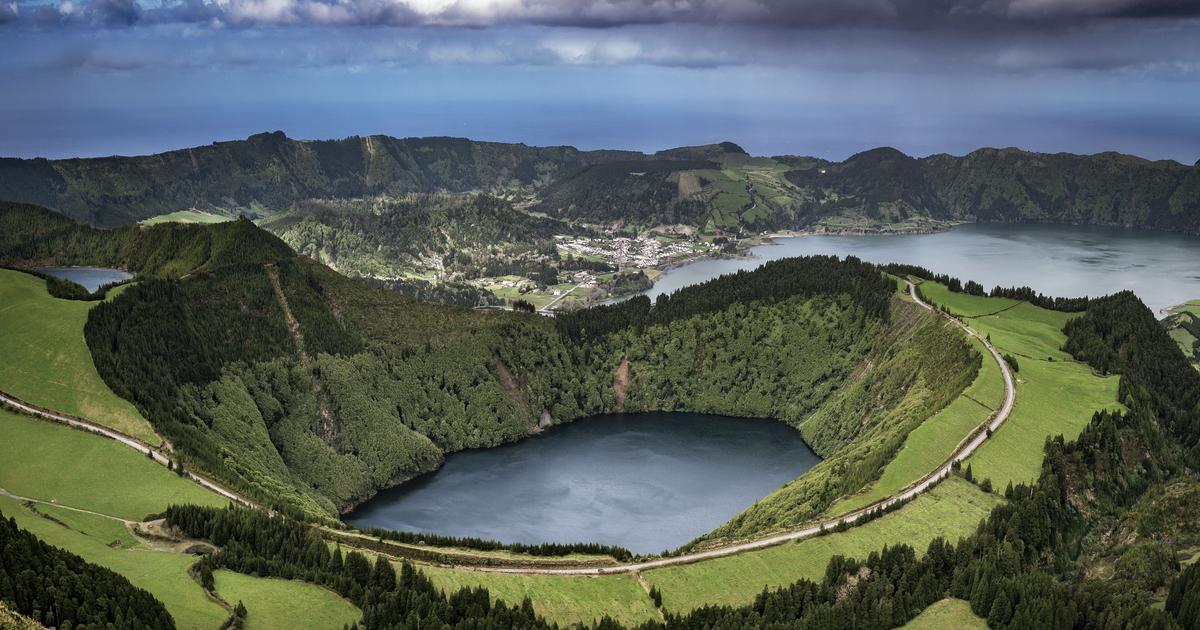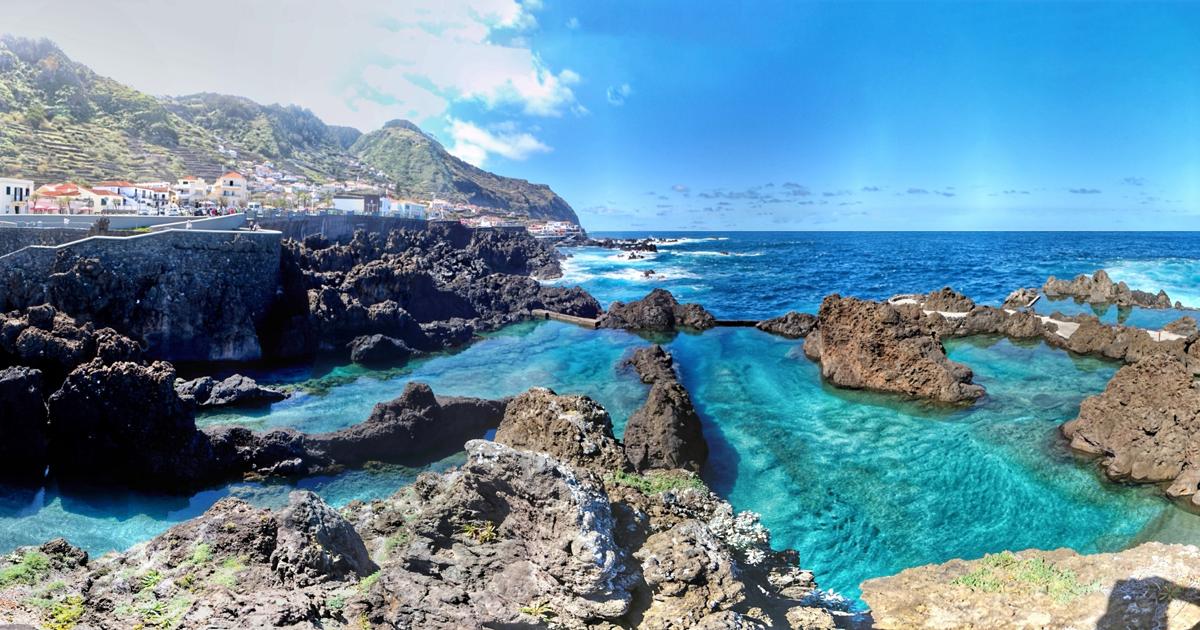Influenced by the Gulf Stream, the Portuguese archipelago of the Azores (9 islands) enjoys a mild and ventilated climate, marked by temperatures rarely dropping below 13°C in winter and not exceeding 25°C in July, with an average relative humidity of 75% throughout the year.
Rainfall is frequent during the winter season and the weather can be unpredictable from October to April, which locals call
The Days of the Four Seasons
.
To discover
Figaro stay in the Azores |
11 days |
The jewels of the Atlantic
Trips to Portugal: tailor-made tours, hotels and stays from our partners
Read alsoWhen to go to Portugal?
Weather, events... The best period by region
Where and when to go hiking in the Azores?
The summer period is the ideal season to venture on the many hiking trails of the Azores.
Jeroen / stock.adobe.com
The paths that islanders once took to get to Christian festivals or to graze cattle now provide excellent hiking routes, many of which are classified, mapped and marked.
The period running from June to September, when the rainfall is lowest, is the best time to venture on the sublime trails of the Azores.
On Pico Island, you can tackle the archipelago's iconic hike, climbing to the top of Portugal's highest mountain.
The
Vinhas da Criação Velha trail
offers a different experience.
Its rocky and coppery paths cross a wine region listed as a UNESCO World Heritage Site, with vines planted in
paredes
, low stone walls that extend to the sea. In
São Jorge
, hiking around the
Caldera do Santo Cristo
promises magnificent views of the coastline.
The 10 Km trail from
Loural
to
Fajã de São João
is also worth a detour, as is the one crossing the
Reserva da Lagoa do Fogo
, in São Miguel, where temperatures fluctuate between 22°C and 26°C in summer, which remains a perfect time for adventure.
Read alsoTravel to the Azores archipelago, nine bewitching Atlantic islands
The Azores in pictures
Go to slideshow (8)
When and where to go to the Azores to observe the whales?
Blue whales are most visible in late winter and baleen whales between late spring and summer.
Gonzalo Jara
Cetacean experts count the islands of São Miguel, Terceira, Faial and Pico among the best spots in the world to observe different species of whales.
This unique spectacle is explained by the particularity of the underwater landscape of the archipelago.
Deep currents rush between steep-sided volcanoes, bringing nutrient-rich water.
With such an abundance of food, sperm whales, the emblematic species of the Azores, make these waters at 22°C in summer their permanent home throughout the year, as do several species of dolphins.
Blue whales are most visible in late winter while baleen whales feed on the plankton around the archipelago between late spring and summer.
Read alsoFive diving spots to swim with sharks
Where and when to go to discover the main islands of the Azores?
The mild summer temperatures allow you to safely consider hiking or canyoning, explore the botanical gardens and discover the typical villages and landscapes of the Azores.
Alex / stock.adobe.com
The island of
São Miguel
lends itself perfectly to sports activities, especially canyoning.
Travelers looking for adrenaline will take advantage of the mild summer temperatures, when the mercury hovers around 24°C, to hurtle down waterfalls and carve their way along the rivers of
the Ribeira dos Caldeirões Natural Park
.
Western São Miguel is home to the Lake of the Seven Cities (
Sete Cidades
), a butterfly-shaped crater lake bisected by a bridge.
Faia
l is nicknamed
the blue island
because of the sublime hydrangeas which bloom along the hills, roads and hiking trails, offering a pretty sight to admire between the end of July and the beginning of August.
Also take advantage of the mild summer temperatures to explore the island's botanical gardens, where the endemic flora of the Azores is showcased.
Read alsoCape for São Miguel, the green island of the Azores
In
São Jorge
, villages huddle between volcanic hills.
Discover the small port of Urzelina, devastated by an eruption in the 19th century, and admire the Church of Santa Barbara in Manadas.
Bird watchers can head
to Corvo Island
to see rare species such as the endemic Azorean bullfinch, red-eyed vireo, speckled furrow and a variety of multicolored warblers that inhabit the island throughout the year.
The Azores are also an excellent destination for surfing, kite surfing and windsurfing.
If the winter period is dominated by the strong swells from the north, the summer months see the breaking waves from the south, generated by the tropical storms that pass off the archipelago.













